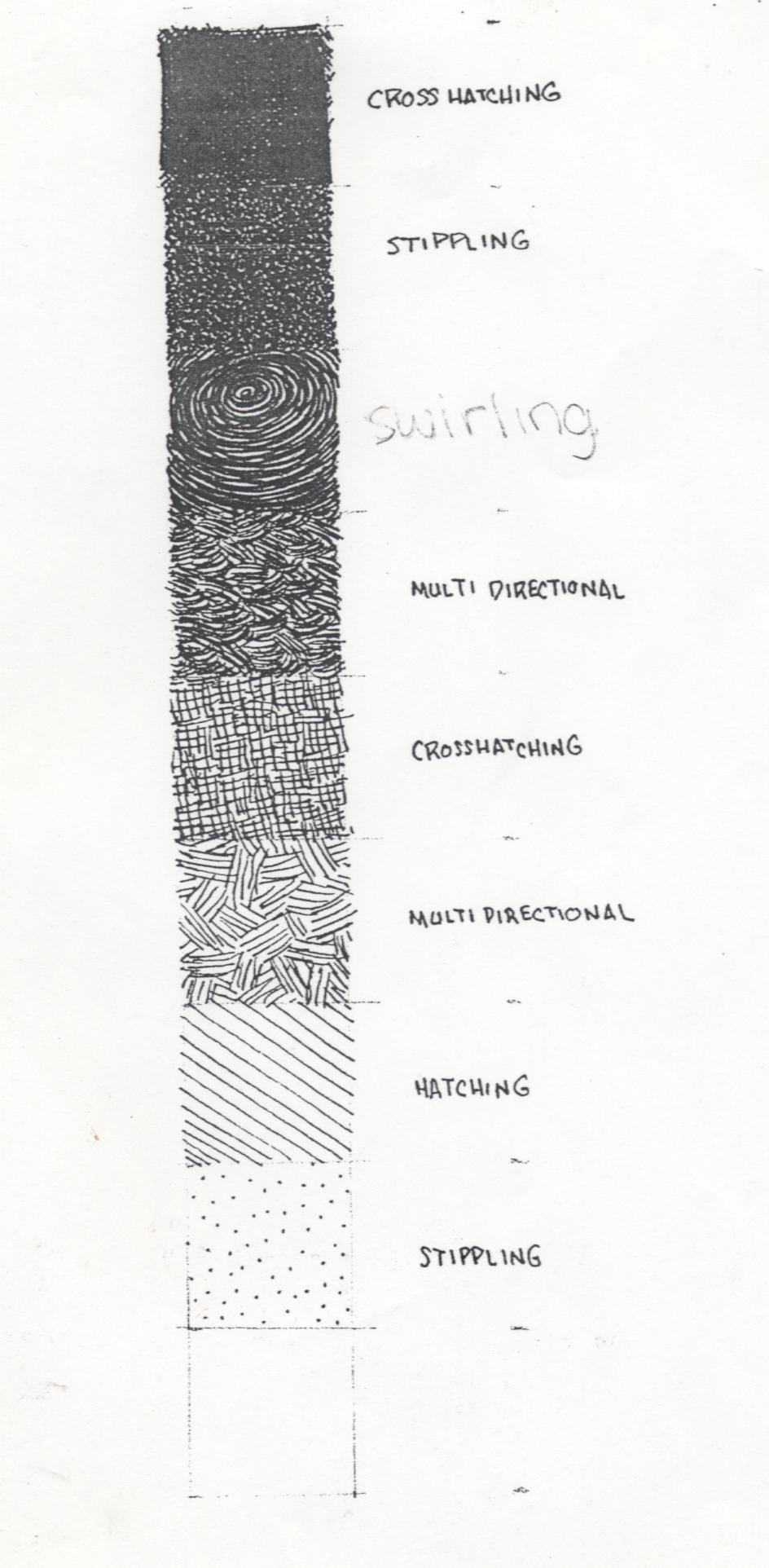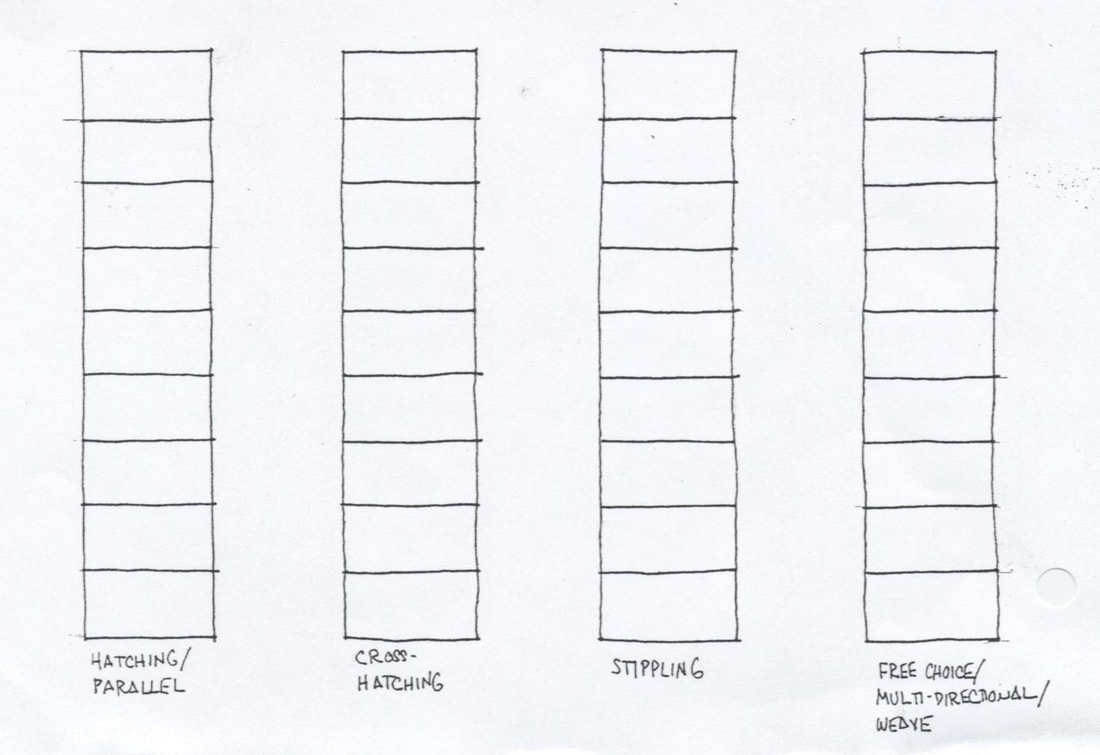Due:
One week
After doing three value scales using hatching, cross-hatching, and stippling; and experimenting with pen & ink techniques such as multi-directional marks, weaving, and "swirls", make a tonal value drawing of a meal consisting of all your favorite foods, using pen & ink.
Imagine seeing the table setting from across and looking downward, so that you can see the tops, the front, and some of the sides of your different foods. Draw the table setting as if it actually exist
Musts:
- Be from a view as if looking away and down, so objects appear three dimensional.
- Fill the entire picture plane, such that some objects will get cropped.
- Include at least six interesting forms/foods.
- Use overlapping. Closest objects will overlap those behind.
- Have a range of tonal value (darks, middles, lights)
- Variety of textures.
- NO drawn edges / lines / contours
- Use THIN drawing pens, not felt tips or markers.
Media:
HB (#2) pencil
Set of drawing pens
Sketch paper (for thumbnails)
Heavyweight white drawing paper
Steps:
1. Collect photographic references,
2. Work out composition in a series of thumbnail sketches.
3. Draw a full-sized (6 x 9") rough draft
4. Transfer the rough draft in light pencil line to 6 x 9" heavyweight paper.
4. Begin inking using hatching, crosshatching, and/or stippling.
Try not to draw any contour lines (outside edges) in ink, but define edges by your use of carefully made tonal values, as in my example on the center tables.
Grading:
You will be graded on the design/composition and technical quality with the pen.
- Having a variety of interesting-looking foods
- Filling the picture plane
- Having dominant shapes/forms
- Three-dimensionality of foods
- Sense of depth / 3D space through size/scale, overlapping, and perspective.
- Skillful use of hatching, cross-hatching, stippling, and/or other pen techniques.
- Use of directional marks to create sense of form / 3-dimensionality
- Range of tonal value
- Strong contrast
- Variety of textures
- Edges that are created by value changes (and not by drawn contours)
General Art Rubric


 RSS Feed
RSS Feed
